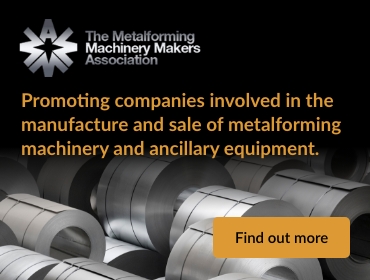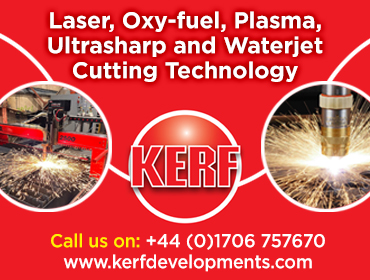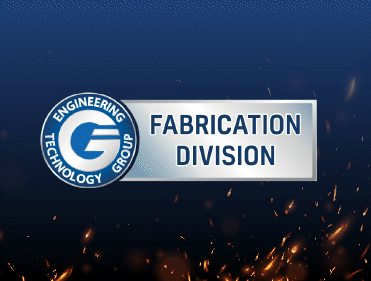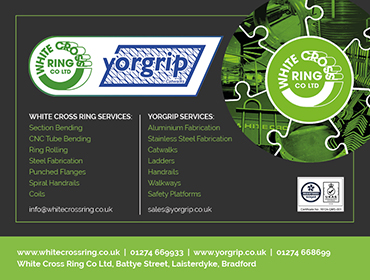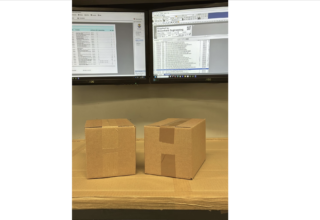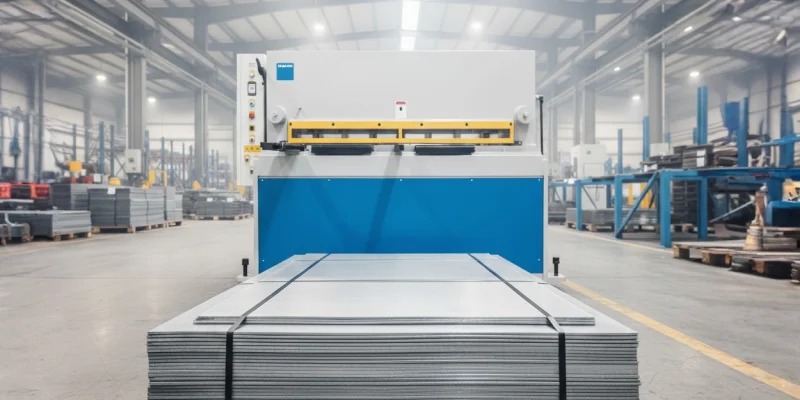
Dimakin explains, When it comes to cutting sheet metal accurately and efficiently, choosing the right metal cutting machine is critical. The performance of the fabrication process depends on how well your equipment matches the type and thickness of material you’re working with. Among the most essential tools for this task are sheet metal shears, also known as guillotine shears, designed to deliver clean, straight cuts with precision and repeatability.
However, not all shears are built the same. Understanding their cutting capacities helps ensure that you select the right machine for your needs, whether for light workshop tasks or heavy industrial applications.
What Are Sheet Metal Shears?
A sheet metal shear is a machine designed to cut sheet and plate materials along a straight line. It operates through a powerful shearing action, using an upper and lower blade to make clean cuts while minimising heat generation and edge distortion.
These machines come in various types, ranging from manual shears suitable for small workshops to hydraulic guillotine shears designed for heavy-duty industrial work. The right choice depends on your material type, thickness, and production volume.
What is the Importance of Cutting Capacity?
Cutting capacity refers to the maximum material thickness a shear can cut effectively while maintaining accuracy and blade integrity. Cutting length, by contrast, defines the maximum sheet width the machine can handle.
Choosing a machine with the correct capacity prevents overloading, extends blade lifespan, and ensures consistent results.
For instance, a shear rated for 1.6 mm mild steel is ideal for light fabrication and small-scale work, while one capable of cutting 6.5 mm mild steel suits industrial applications requiring strength and speed. Understanding this distinction helps fabricators choose metal cutting machines that balance cost, efficiency, and durability.
Manual vs. Hydraulic Sheet Metal Shears

1. Manual Sheet Metal Shears
Manual shears are operated by hand, typically using a lever mechanism. They are an excellent choice for workshops that need a reliable and cost-effective solution for light fabrication.
Dimakin’s HS-1316M offers a 1.6 mm mild steel capacity with a 1320 mm shearing length, making it perfect for smaller-scale projects that demand accuracy without the need for powered systems.
Key Benefits
- Simple operation and low maintenance
- Cost-effective for low-volume cutting
- Ideal for light-gauge materials
- Compact size suitable for small workshops
Manual models deliver precision and control, especially for artisans, maintenance teams, and fabricators working on short production runs or custom pieces.
2. Hydraulic Sheet Metal Shears




Hydraulic shears are powered by hydraulic cylinders that deliver consistent cutting force. They are designed for cutting thicker or harder materials quickly and efficiently, making them ideal for high-volume or heavy-duty applications.
Dimakin’s hydraulic shears, such as the HS-1320, HS-1335, and HS-1365, demonstrate how technology enhances performance. With capacities ranging from 2 mm to 6.5 mm mild steel and cutting lengths up to 2080 mm, these machines combine precision and power.
Key Benefits
- Smooth, vibration-free cutting
- Capable of handling thicker sheets
- Consistent performance with minimal operator effort
- Suitable for demanding fabrication and construction environments
For sectors such as automotive, fabrication, and construction, hydraulic shears offer the speed, precision, and durability needed to meet production demands.
What are the Factors to Consider When Choosing a Metal Cutting Machine
Selecting the right sheet metal shear involves more than checking its capacity rating. Several factors determine the best match for your operation:
1. Material Type
Not all metals behave the same under pressure. Mild steel, stainless steel, and aluminium each have different tensile strengths. Always ensure the machine’s rated capacity aligns with the material you cut most often.
2. Cutting Length
The width of your sheet determines the required shearing length. Models like the HS-1365 and HS-1535 provide flexibility for handling various sheet sizes efficiently.
3. Production Volume
For smaller projects or occasional cuts, manual shears are sufficient. However, if your operation involves frequent or heavy cutting, hydraulic guillotine shears will improve productivity and reduce operator fatigue.
4. Precision and Finish
High-quality shears maintain consistent blade alignment and pressure, ensuring clean, burr-free cuts. This reduces post-cut finishing work and improves product quality.
5. Maintenance and Longevity
A machine with a solid frame, reliable hydraulics, and quality blades ensures long-term performance. Regular maintenance, including blade sharpening and lubrication, keeps your shear in peak condition.
Applications of Sheet Metal Shears
Both manual and hydraulic sheet metal cutting machines are used across industries for applications such as:
- Fabrication of ducting and ventilation systems
- Cutting sheet panels for enclosures and cabinets
- Automotive bodywork and panel production
- Construction and architectural metalwork
- Workshop maintenance and repair tasks
Their versatility makes them indispensable tools wherever precision and consistency in metal cutting are required.
Why Matching Cutting Capacity Matters
Using a shear with inadequate capacity leads to poor-quality cuts, excessive wear, and even machine damage. Overloading a metal shear reduces its efficiency, shortens blade life, and risks operator safety.
Conversely, a machine with a capacity far beyond your needs can add unnecessary cost and take up valuable workshop space. Matching your shear to your typical workload ensures maximum efficiency, lower maintenance costs, and a better return on investment.
Understanding cutting capacities is essential for selecting the right sheet metal fabrication equipment. Whether you choose a manual or hydraulic model, matching the machine’s capabilities to your material type, thickness, and production demands ensures optimal performance.



